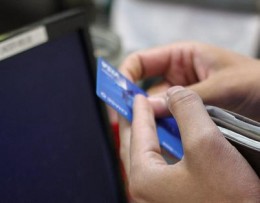Access to Credit and the Poor

In the NYT Times Magazine, economics reporter Shaila Dewan looks at how credit card debt helps low-income people. For one thing, having access to credit and demonstrating an ability to pay back money you borrow builds a better credit profile that helps people save money over time:
Without credit, you have to make large deposits to turn on your electricity or gas or to put your phone bill in someone else’s name. If you want to buy a car, and you have good credit, a $10,000 loan might cost you $1,300 in interest. With bad credit, you’ll pay $7,600. If that car breaks down, a $500 expense might mean a crushing payday loan, or even a lost job.
Having access to credit also gives people the ability to remain liquid. Many people with credit card debt also have money in savings, and they’d rather keep that money in reserve as a way to feel secure than use it all to pay off a card:
In 2000, two business-school professors found that 90 percent of Americans with credit-card debt also had liquid assets, and about a third of them had enough to pay off the entire debt. But they didn’t. One reason is that if you spend your savings, you’re back to zero quickly. So you may prefer to pay a little more to borrow while keeping something in reserve. “We use credit cards all the time, so why shouldn’t other people be able to borrow as needed?” Morduch says. “They have the same needs. The impulse to stay away from helping people get access to credit is based on good intentions, but it’s not based on an understanding of how people live their lives responsibly.”
But perhaps the most interesting part of Dewan’s column was the discussion of “twin accounts” which allows low-income people with no credit and limited income to build credit and savings simultaneously. Here’s how it works: A person takes out a $300 loan for a 12-month period which is then put into a “locked savings account.” The person then makes a $25 monthly payment to pay back the loan, which is matched by the organization running the program. At the end of the year, the person will have the loan paid off, $600 in savings, and a year’s worth of credit building. Sounds like a great deal, right? An example of this kind of program can be found here.
Photo: Andres Rodriguez
Support The Billfold
The Billfold continues to exist thanks to support from our readers. Help us continue to do our work by making a monthly pledge on Patreon or a one-time-only contribution through PayPal.
Comments